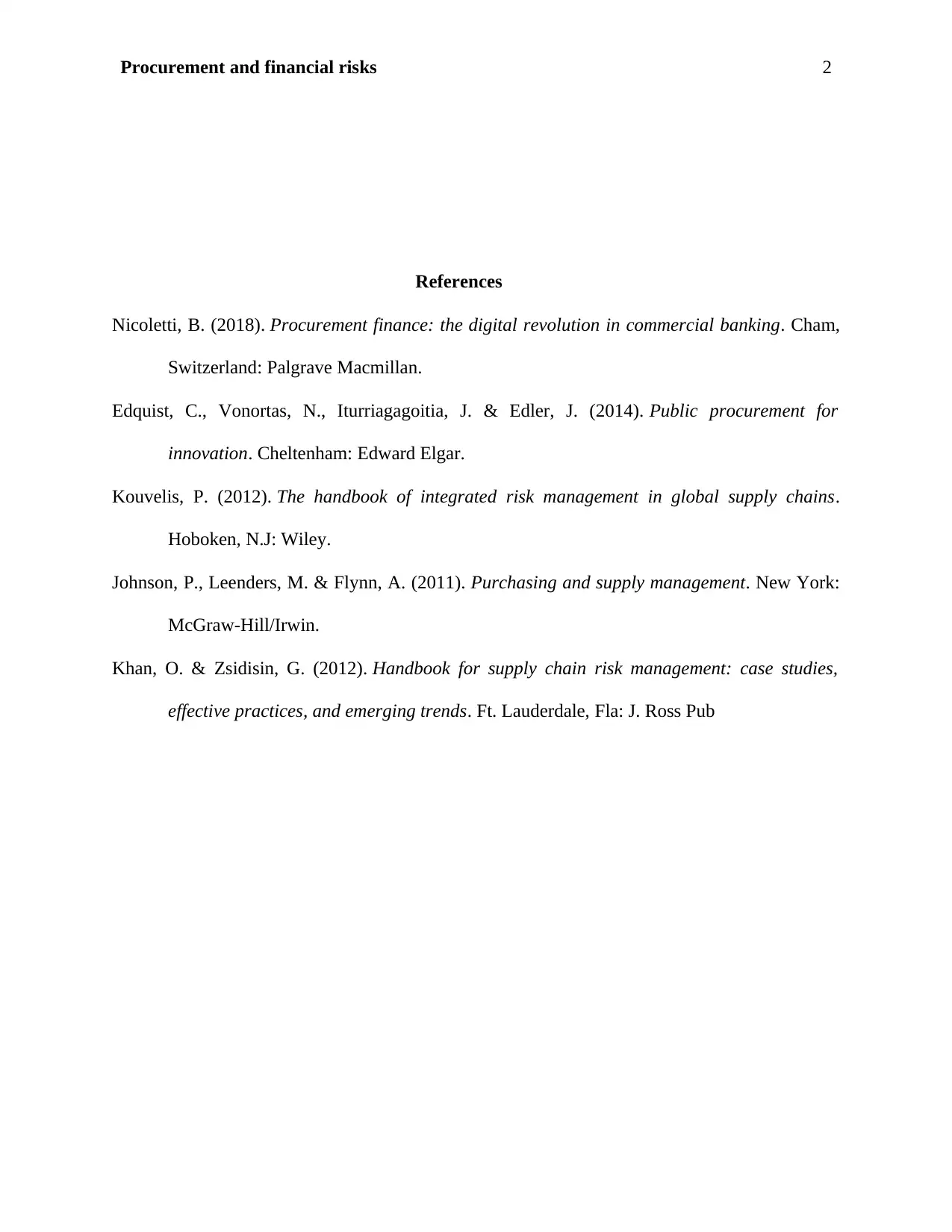Procurement and Financial Risks: Analysis and Mitigation Strategies
VerifiedAdded on 2023/01/13
|2
|744
|57
Report
AI Summary
This report provides an overview of procurement and financial risks, emphasizing the importance of contract management within the procurement cycle. It defines procurement risk, including cost, fraud, and quality issues, and highlights the role of procurement planning in risk reduction and value enhancement. The report also addresses financial risks, such as those related to debt and financial obligations, using the Royal Adelaide Hospital as a case study. Specific financial risks like credit, liquidity, and currency risks are examined. The report explores various mitigation strategies for both procurement and financial risks, including stronger supplier relationships, increased transparency, and compliance with regulations. It concludes by underscoring the significance of early risk identification and mitigation for organizational success.
1 out of 2








![[object Object]](/_next/static/media/star-bottom.7253800d.svg)